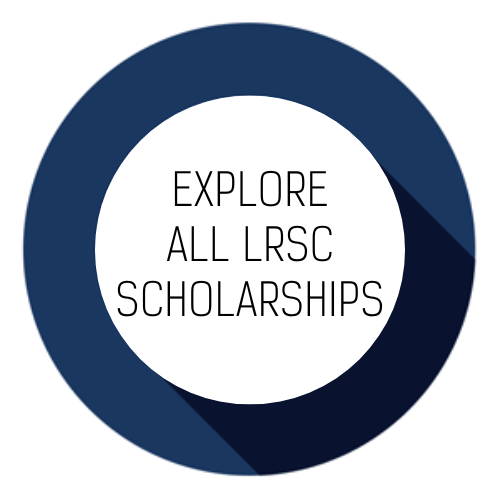
STAFF
Lisa Howard
Nursing Education Specialist
701-662-1644
Lisa.Howard@lrsc.edu
Rachel Fritz
Allied Health Specialist
701-662-1629
Rachel.n.Fritz@lrsc.edu
New Program in Development:
Medical Lab Technician
Allied Health Programs
At Lake Region State College, Allied Health programs help students build meaningful careers in healthcare. Whether it’s nursing, emergency care, or supporting community wellness, these programs combine hands-on experience with practical knowledge. LRSC focuses on preparing students to step confidently into high-demand roles where they can make a real difference in the lives of others.
Community Paramedicine
Community Paramedicine is a new community care model allowing EMTs and Paramedics to expand their role. With the Community Paramedicine Certificate, EMTS and Paramedics assist public health and primary care providers in delivering preventative care to underserved populations, aiming to improve access to care. Employer demand in the EMS and in public health is growing as this model is promoted by the National Association of State EMS Officials, the National Organization of State Offices of Rural Health, and the Center for Leadership, Innovation, and Research in EMS. Demand and community need are expected to grow.
CURRICULUM
CURRICULUM
Prerequisites: Current licensure as an EMT, AEMT, or Paramedic with two (2) years of experience.
Courses | ||
| EMS 102 | Introduction to Community Paramedicine (1st 8-weeks: EMTs, AEMTs & Paramedics) | 3 |
| EMS 103 | Clinical Applications in Community Paramedicine (1st 8-weeks: EMTs, AEMTs & Paramedics) | 1 |
| EMS 104 | Health Care Delivery in Community Paramedicine (2nd 8-weeks: EMTs, AEMTs & Paramedics) | 3 |
| EMS 105 | Clinical Applications in Community Paramedicine II (2nd 8-weeks: EMTs, AEMTs & Paramedics) | 2 |
| NURS 201 | Nursing Concepts Transition I for the Paramedic (Spring semester: Paramedics) | 3 |
| NURS 202 | Nursing Concepts Transition II for the Paramedic (Spring semester: Paramedics) | 3 |
| EMS 206 | Clinical Applications in Community Paramedicine III (Spring semester: Paramedics) | 1 |
Paramedic to Nurse
The Paramedic-to-Nurse Program enables experienced paramedics to transition into nursing through specialized bridge courses. To be eligible for admission, students must have two years of experience as paramedics and must complete the nursing program prerequisites. After completing the bridge program and the required general education courses with a grade of C or better, students will qualify to advance to the Associate Degree program and obtain a Registered Nursing License in North Dakota.
CURRICULUM
CURRICULUM
| Paramedic to Nurse Prerequisites | ||
| Two (2) years experience as a paramedic | ||
| General Education Courses | ||
| BIOL 220 | Anatomy & Physiology I | 4 |
| BIOL 221 | Anatomy & Physiology II | 4 |
| ENGL 110 | College Composition I | 3 |
| PHRM 215 | Introduction to Pharmacology* | 3 |
| PSYC 111 | Introduction to Psychology | 3 |
| PSYC 250 | Developmental Psychology | 3 |
| Bridge Courses | ||
| NURS 201 | Nursing Concepts Transition I from the Paramedic | 3 |
| NURS 202 | Nursing Concepts Transition II from the Paramedic | 3 |
| NURS 203 | Nursing Practice Transitions from the Paramedic** | 3 |
*must be completed within 7 years of acceptance into the nursing program
**ratio of credit hours to clinical hours is 1:3
Surgical Technology
Our Surgical Technology Certificate Program is designed to prepare students for a critical role in the operating room. Through a combination of online classroom instruction and hands-on clinical experience, students will gain the skills needed to assist surgical teams during procedures. Training will focus on sterile techniques, surgical equipment, patient preparation, and teamwork in high-pressure environments. View the Surgical Technology Factsheet.
This program must be started in the fall semester (no spring or summer admission).
CURRICULUM
CURRICULUM
Courses | ||
| SRGT 135 | Sterile Processing | 2 |
| ENGL 125 or 110 | Introduction to Professional Writing or College Composition I | 3 |
| SRGT 170 | Surgical Skills Application I | 5 |
| BOTE 171 | Medical Terminology | 3 |
| SRGT 115 | Introduction to Surgical | 2 |
| SRGT 136 | Surgical Techniques | 2 |
| BIOL 115 | Human Structure and Function | 4 |
| SRGT 230 | Surgical Procedures | 4 |
| SRGT 270 | Surgical Skills Application II | 5 |
| SRGT 265 | Perioperative Sciences | 2 |
| SRGT 274 | Certification Prep & Review | 2 |
| SRGT 275 | Surgical Skills Application III | 2 |